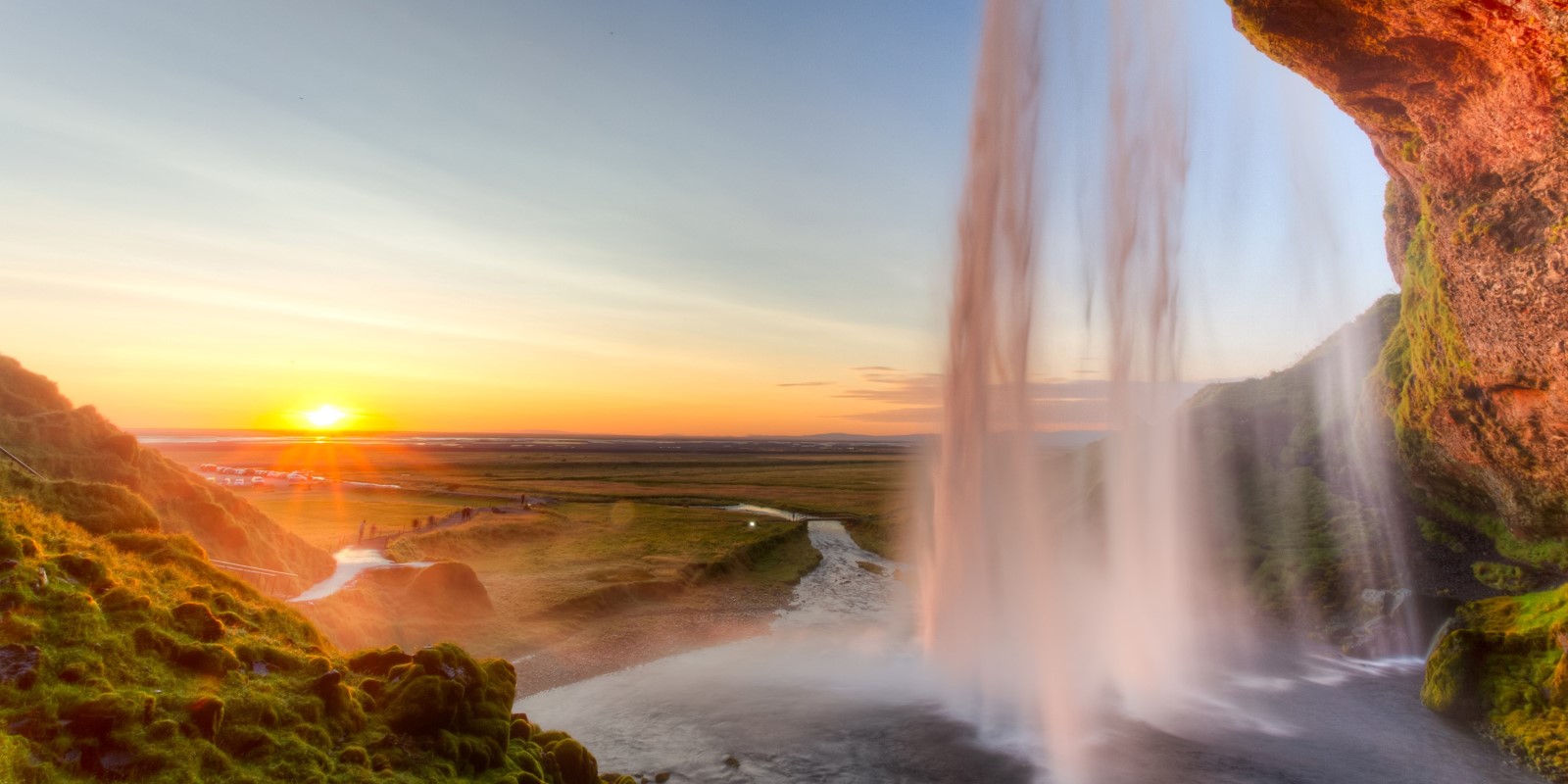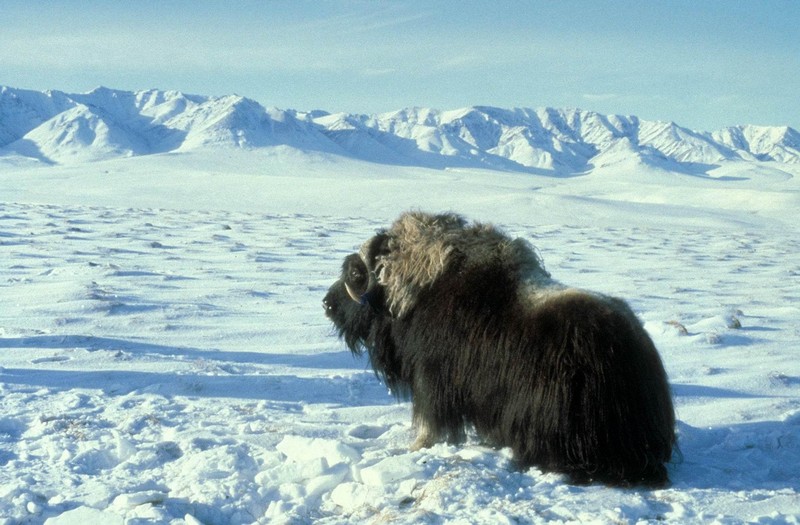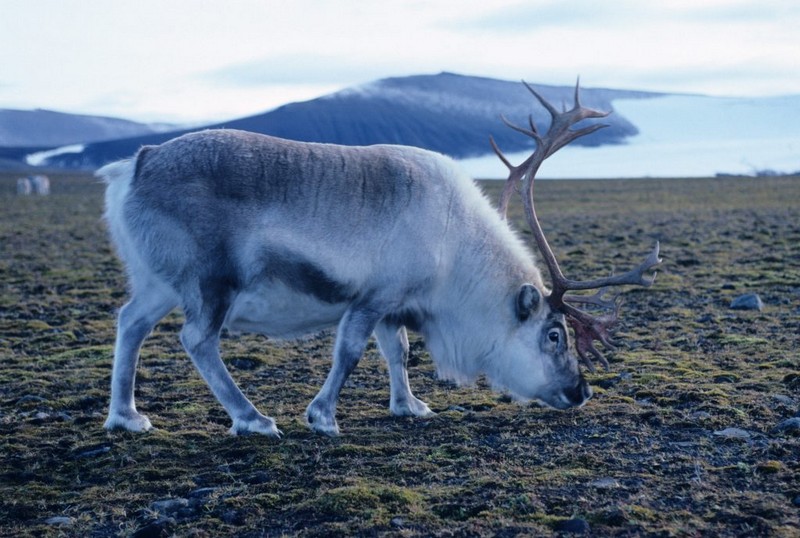Greenland Disko Bay Expedition
Traveling by sea is a magnificent way to experience Greenland. The places most worth seeing are situated along the dramatic coast line: small and colourful houses situated on the steep mountains sides down to a fjord, giant glaciers producing enormous icebergs, whilst whales and seals play in the sea.
The people of Greenland live along the coast in small towns and settlements – at summer only accessible from the sea. Their culture, architecture and living conditions are enriched and limited by the harsh nature of the Arctic. On our town visits, you will have opportunities to meet the hospitable Greenlanders and learn more about the Inuit culture.
Flying in from Reykjavik or Copenhagen to the airport of Kangerlussuaq, we embark the ship and head for the colourful town of Sisimiut. Then further to the small settlement of Qeqertarsuaq on Disko Island. Here we can experience the age-old “Kaffemik” tradition in the community house. On the southward voyage we visit the calving glacier at Eqip Sermia, the town of Ilulissat, Iceberg Capital of the World, and the settlement Itelleq to experience Inuit hunting culture. Back in Kangerlussuaq we disembark Ocean Atlantic and enjoy a bus tour to the Icecap before flying back to Reykjavik, Iceland, or Copenhagen, Denmark.
Unforgettable experiences await you in Greenland!
Tour Itinerary
We board our charter flight in Reykjavik or Copenhagen bound for Kangerlussuaq.
Welcome to Greenland!
Upon arrival in Greenland we are met by Albatros Arctic Circle staff on ground.
All those who have booked the Reindeer Glacier excursion will be going out on an adventure immediately after landing (this optional tour is subject to an additional charge). Guests not participating in the excursion, can take a stroll around the town on their own until embarkation time at 3 pm.
After finishing the day’s excursion, we will transfer to the harbour and board the ship by Zodiacs that ferry us in small groups to the ship anchored about one kilometer out into the fjord. After checking in, there will be a short safety demonstration before dinner is served in the lovely dining room. We will set sail on our voyage after dinner and begin our passage through the 160 km-long fjord and out into the ocean.
Dinner
After breakfast, we arrive to the colourful town of Sisimiut, where we will get an idea of what modern Greenland looks like. With 5,400 inhabitants, it is considered Greenland’s second ‘city’. People have lived around Sisimiut on and off since 2,500 BC.
In 1756, Count Johan Ludvig Holstein, established a colony here and called it “Holsteinsborg”. The oldest part of Sisimiut’s historic quarter features town houses from this “Holsteinsborg” era, and the oldest house in town dates back to 1756. One of the most culturally significant buildings is the Blue Church, built in 1775.
Nowadays, Sisimiut is an important place for education and industry, and local factories process the bulk of Royal Greenland's fishing. The fish processing plant is one of the largest of its kind in Greenland, and one of the most modern in the world.
Our city tour highlights include the historic colonial quarter, as well as the museum and the beautiful church. Additionally, we will pay a visit to the busy city centre for a glimpse of what daily life is like in 21st century Greenland. In the afternoon, our voyage will continue northward.
As evening falls, we will pass the Sisimiut Isortuat Fjord, the Nordre Strømfjord settlements of Attu and Ikerasaarsuk, and the small town of Kangaatsiaq. During the course of the bright night, we will pass Aasiaat and proceed into the southern waters of Disko Bay. Next, the ship’s heading will be set for Disko Island, known for its distinctive 1,000-meter/3,280 feet layered crags.
At this point, we will be north of the Arctic Circle! Here, the nights are bright and early risers can enjoy the sight of the icebergs on Disko Bay as they squeeze out of the Ilulissat Icefjord and dance into the frigid ocean waters.
Breakfast
Our next sojourn lies on the southern tip of the Disko Island, where Ocean Atlantic will anchor in a protected natural harbour, which is named Godhavn (‘Good Harbour’) in Danish, while its Greenlandic name, Qeqertarsuaq, means ‘The Big Island’.
Although topographically quite different from mainland Greenland due to the basalt characteristics of the Disko Island’s mountains, Qeqertarsuaq maintains a long, rich history and once served as one of the country’s important economic centres. From the 16th century, the community was relatively prosperous and, in fact, considered the most important town north of Nuuk until the mid-1900s, due in part to the area’s sizeable whale hunting population.
During our visit, we will wander through town, paying a visit to the characteristic octagonal church, nicknamed “God’s Inkpot”, as well as to a local community center that will be hosting a traditional Greenlandic “kaffemik”, which can be best described as a friendly gathering with coffee, cake and traditional dances and music.
Musicians from Greenland originally played on a drum (qilaat) made from an oval wooden frame covered with the bladder of a polar bear. Unlike other drums, the qilaat was played by hitting the frame with a stick, not the skin itself. This modest instrument was used for a variety of purposes, including entertainment, exorcism and witchcraft.
After the missionaries arrived, drum dancing was prohibited and later replaced by part-singing of psalms and choral works, which today are renowned for their particular Greenlandic sound. Today, drum dance is used as entertainment in cultural events and on festive occasions.
Greenlandic music is inspired and influenced by music from other cultures, like the Danish and Inuit cultures, and more specifically, Dutch and Scottish polka, American country and rock ‘n’ roll and even Hawaiian music, which inspired the so-called Vaigat-musicians in Greenland in the 1950s and 60s.
When you wake up this morning, you will find yourself almost 600km north of the Arctic Circle, and in one of Greenland’s most beautiful and sunny regions. The ship has reached Uummannaq, situated on a small island. The impressive 1,175m high heart-shaped mountain that has given the town its name dominates the view (Uummannaq means ‘place where the heart is’). There is time to explore the city before heading back to the ship for lunch. From the town there is an extraordinary vista comprising the island’s 1,000-meter tall rock faces, the snow-covered peaks on Nuussuaq peninsula to the south, and out across the fiord. In the fiord, icebergs of all shapes and sizes majestically float by on a course set by wind and current. As much as 5 active glaciers at the bottom of the fiord ensure that we can observe plenty of icebergs.
Uummannaq was founded as a colony in 1758 on the Nuussuaq mainland, but shortly thereafter, in 1763, it was moved to the nearby island, as seal hunting was more bountiful here. On our walk along the town’s steep streets we visit the historic train-oil building, built in 1860. Inside its yellow walls, whale and seal blubber used to be stored. Because of the horrid stench, the blubber was not boiled here, but well outside town! Behind the train-oil storage we will find a peat hut, which was still in use a few years ago.
The dry and settled arctic climate has around 2,000 hours of sunshine and 100 millimetres of precipitation per year, giving Uummannaq the right to call itself the Greenlandic Riviera!
In the morning the cruise ship will have reached a magnificent natural highlight, the calving Eqip Sermia glacier. We enjoy lunch on the sun deck with this magnificent natural wonder in the background.
Situated approximately 50 nautical miles north of Ilulissat, the Eqip Sermia Glacier is renowned for its jaw-dropping beauty. Legendary arctic explorers selected this location as a base for their studies. One such explorer, the acclaimed Swiss glaciologist, Alfred de Quervain, used the location as a base for his expeditions onto Greenland’s inland ice sheet over a century ago. We will sail as close as possible to the ice’s edge – but at a safe distance to avoid plunging blocks of ice and violent waves that often result from the calving glacier.
In the afternoon we head for Ilulissat, where we berth in the evening and go for an evening walk to the Sermermiut plain.
If the sea ice is too dense between the Ataa fjord and the Eqi glacier the captain will have to select a different route today. In this case, the itinerary will be adjusted accordingly and we might, for example, pay a visit to the abandoned coal mine at Qullissat or visit the settlement of Saqqaq.
Lunch on the sun deck
Ilulissat is possibly the most well located town in Greenland. The name simply means ‘icebergs’ in Greenlandic, and the town’s nickname is rightly ‘the Iceberg Capital’.
In Disko Bay, which is located just off the coast of Ilulissat, gigantic icebergs linger in the freezing waters. These icebergs come from the Icefjord, which is located a half hour’s hike south of Ilulissat. These impressive frozen structures are born some 70km/43,5 miles deeper into the fjord by the enormous Sermeq Kujalleq glacier. This 10km/6 miles-wide glacier is the most productive glacier outside of Antarctica; Whereas most glaciers only calve at a rate of approximately a metre/three feet a day, the Ilulissat glacier calves at a rate of 25m/82 feet per day. The icebergs produced by the glacier represent more than 10% of all icebergs in Greenland, corresponding to 20 million tonnes/22 million us tons of ice per day!
These facts, together with the fjord’s unforgettable scenery, have secured the Icefjord a place on UNESCO’s World Heritage List.
During the more than 250 years that have passed since the establishment of Ilulissat, the town has steadily flourished. Today, Ilulissat is Greenland’s third largest town, with more than 4,500 inhabitants. The town is very vibrant, welcoming and lively with a wide range of cultural attractions, according to Greenlandic standards.
The legendary polar explorer, Knud Rasmussen, and his good friend, Jørgen Brønlund, were both born in Ilulissat. On this day, you will also have the opportunity to join a boat trip to the Icefjord (not included). The journey takes about two and a half hours in total, a great opportunity to take a closer look at the amazing ice-sculpted scenery.
The trip is definitely something out of the ordinary and a great natural experience that you will remember for years to come – but be sure to have warm clothing on!
If a hike or a trip by boat does not present enough excitement, there is also an opportunity to arrange a flightseeing ride over the Icefjord (not included).
Please note the boat and flightseeing excursions to the Icefjord are not included in the general tour price. Furthermore, the flightseeing excursion must be booked in advance. Refer to Price Information for more details. In the evening, we will cruise southward from “the Iceberg Capital”, leaving lovely Disko Bay behind us as we part.
The settlement of Sarfannguit, which translates into "the place of the little stream” an appropriate name for a settlement nestled at the foothills of the mountains and glaciers in the distant backcountry. The settlement’s slightly more than 100 residents live off hunting, trapping and fishing, most often in pursuit of arctic char, reindeer and musk oxen.
Although Sarfannguit is quite remote, it lies within a few hours from Sisimiut, the second-largest town in Greenland. The accessibility to such a large town provides an indispensable economic benefit to a small community like Sarfannguit.
A stroll through the settlement offers insight into rural life in today’s Greenland, where modern conveniences and technological advancements, such as internet and smart phones have become commonplace, yet locals still place great value on important customs and preserving their traditions and their Inuit heritage.
We will continue our journey toward the fjord of Kangerlussuaq, also known as Sondre Stromfjord. Especially the first part of the fjord gives a great opportunity to enjoy an impressive passage with panoramic views of high mountains and deep valleys.
During the night, we will have completed our passage through the 160-kilometer/100 mile Kangerlussuaq Fjord. After breakfast aboard the ship, we will bid farewell to the ship's staff and the Zodiac boats will shuttle us to shore.
Due to Kangerlussuaq’s military history and present-day role as an important air travel hub, Kangerlussuaq remains fairly isolated from Greenland’s rich cultural traditions, in comparison to other regions. While you still find cultural experiences when visiting Kangerlussuaq, the most impressive attraction is the surrounding nature, which is just beckoning to be explored.
It is not difficult for one to see that Kangerlussuaq’s landscape has largely been shaped by the last glaciation period, often known simply as the “Ice Age,” some 18,000 years ago. The mountains are rounded and soft, and many meltwater lakes remain. From the inland ice sheet, best known as the Greenland Ice Sheet, the meltwater cuts its way through the porous moraine landscape and flows into Kangerlussuaq Fjord.
Kangerlussuaq’s present-day climate is largely influenced by its well-sheltered location between Greenland’s Ice Sheet, the fjord and mountains. This contributes to its stable conditions, minimal cloud cover and roughly 300 clear nights per year.
This close proximity to the Ice Sheet, combined with the continental climate, is also of great significance to the local conditions. The dry climate, combined with warm winds that “fall” from the Ice Sheet, can result in temperatures that jump up to 30°C (86°F) in the summer, but then fall to an extreme -40°C (-40°F) in winter, making it the coldest inhabited area in Greenland.
Return by flight from Kangerlussuaq to Reykjavik or Copenhagen.
Return by flight from Kangerlussuaq to Reykjavik or Copenhagen
Customer reviews
Thanks Dong
Thank you very much!
Sandra Rogers











